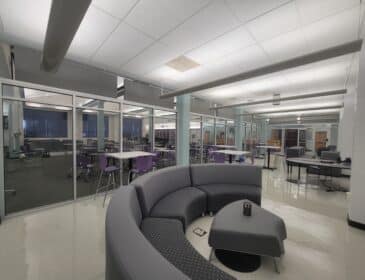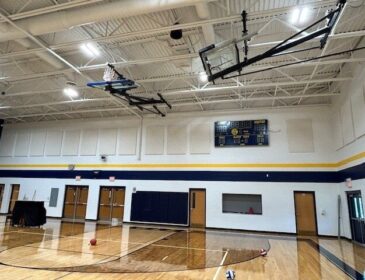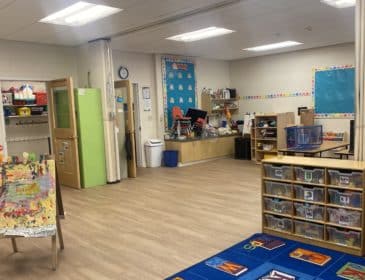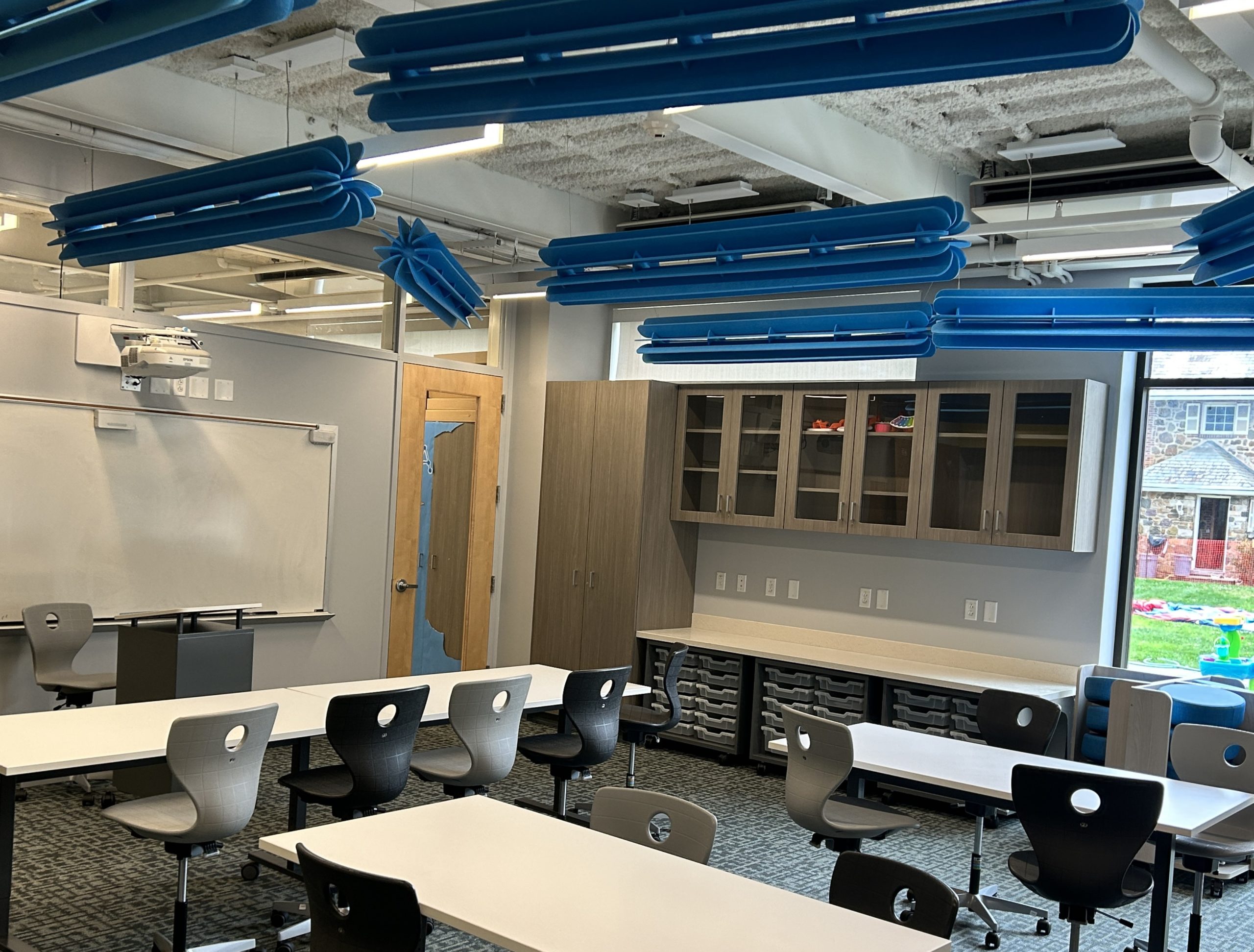NRC is a measure of how well a material absorbs sound. It is rated on a scale from 0 to 1, where 0 indicates no sound absorption and 1 indicates complete absorption. In other words, if you have a classroom with block walls, windows, vct flooring and a plaster ceiling… Your total NRC will be in the 0.3 range. This can be distracting for all students and staff that enter the room. Here are some guidelines for school environments:
- Classrooms: A sufficient NRC Rating is 0.6 to 0.8. Classrooms benefit from good sound absorption to minimize distraction and enhance speech fluency.
- Gyms: A sufficient NRC Rating is 0.3 to 0.6 for a gymnasium. Gyms typically have hard surfaces with low NRC ratings, such as block walls, so while some sound absorption is beneficial, it’s often more challenging and less cost effective to maintain an NRC rating above 0.6.
- Libraries/Media Centers: An acceptable NRC Rating of 0.7 to 0.9. Libraries require a quiet environment for studying and reading, so high NRC ratings are important.
- Cafeterias/Dining Halls: The ideal NRC rating falls within the range of 0.4 to 0.6. Cafeterias/Dining Halls can be noisy environments due to conversations, the clattering of dishes, and students eating and socializing. A moderate NRC helps to absorb some of this sound, reducing overall noise levels and making it more comfortable for students and staff.
So how can you obtain greater NRC in an area? TeamPAR can help you calibrate an area and provide options for enhancing the NRC.
See videos/pictures for acoustical problems we have solved.

Colts Neck High School

Eastern Christian School- Haledon, NJ

St. John’s Nursery School, Bernardsville, NJ

Chatham Day School, Chatham, NJ